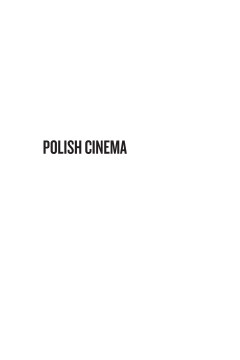
Additional Information
Book Details
Abstract
First published in 2002, Marek Haltof’s seminal volume was the first comprehensive English-language study of Polish cinema, providing a much-needed survey of one of Europe’s most distinguished—yet unjustly neglected—film cultures. Since then, seismic changes have reshaped Polish society, European politics, and the global film industry. This thoroughly revised and updated edition takes stock of these dramatic shifts to provide an essential account of Polish cinema from the nineteenth century to today, covering such renowned figures as Kieślowski, Skolimowski, and Wajda along with vastly expanded coverage of documentaries, animation, and television, all set against the backdrop of an ever-more transnational film culture.
“Marek Haltof is a genuine scholar, a historian who meticulously chronicles not only Polish film history, but all that has been written about it. The style of Polish Cinema: A History is both sophisticated and accessible. He is attentive to the details of motion pictures, able to discuss art films and genre movies with equal authority.” • Annette Insdorf, Columbia University and author of Intimations: The Cinema of Wojciech Has
PRAISE FOR THE FIRST EDITION (originally published as Polish National Cinema)
“Haltof's comprehensive, lucid, and refreshing critical history of Polish cinema significantly expands the existing literature on the topic in English… Essential for all serious libraries and very useful in the undergraduate or graduate classroom.” • Choice
“What makes Haltof's book so wonderful is that, like a great filmmaker, he uses his subject to craft a much deeper and complex story of the Polish people and their search for a national identity ... With clarity and fluidity he makes Poland come alive.” • Film and History
“An informed and concise yet exhaustive account of Polish cinema.” • Slavic Review
Marek Haltof is a Professor at Northern Michigan University. His recent books include Screening Auschwitz: Wanda Jakubowska's The Last Stage and the Politics of Commemoration (2018), Historical Dictionary of Polish Cinema (second edition, 2015), and Polish Film and the Holocaust: Politics and Memory (2012).
Table of Contents
| Section Title | Page | Action | Price |
|---|---|---|---|
| Polish Cinema | iii | ||
| Copyright Page | iv | ||
| Contents | v | ||
| Illustrations | vii | ||
| Acknowledgements | xi | ||
| Introduction | 1 | ||
| Chapter 1. Polish Silent Cinema (1896–1929) | 9 | ||
| Chapter 2. The Sound Period of the 1930s | 41 | ||
| Chapter 3. Cinema, World War II, and the Postwar Construction of National Identity (1939–1948) | 69 | ||
| Chapter 4. Screen Stalinism | 96 | ||
| Chapter 5. Ashes and Diamonds | 115 | ||
| Chapter 6. Adaptations, Personal Style, and Popular Cinema (1964–1975) | 170 | ||
| Chapter 7. Camouflage and Rough Treatment | 220 | ||
| Chapter 8. The Cinema of Martial Law and Afterward (1982–1988) | 254 | ||
| Chapter 9. A Fistful of Dollars | 274 | ||
| Chapter 10. Adapting the National Literary Canon and Reclaiming the Past (1999–2004) | 341 | ||
| Chapter 11. The Transforming Years (2005– ) | 370 | ||
| Appendix A. The Twenty-Five Biggest Polish Box Office Hits on Polish Screens from 1945 to 1989 | 427 | ||
| Appendix B. The Forty Biggest Polish Box Office Hits on Polish Screens from 1990 to 2017 | 429 | ||
| Selected Filmography | 431 | ||
| Selected Bibliography | 445 | ||
| Index of Names | 471 | ||
| Index of Film Titles | 486 |
